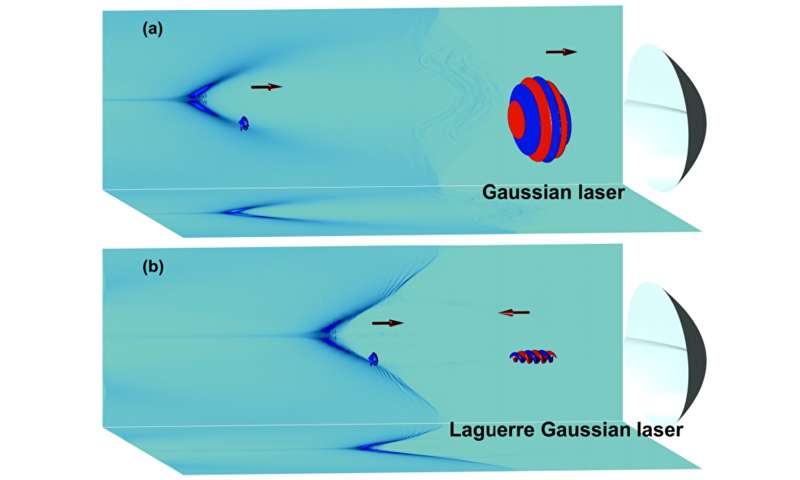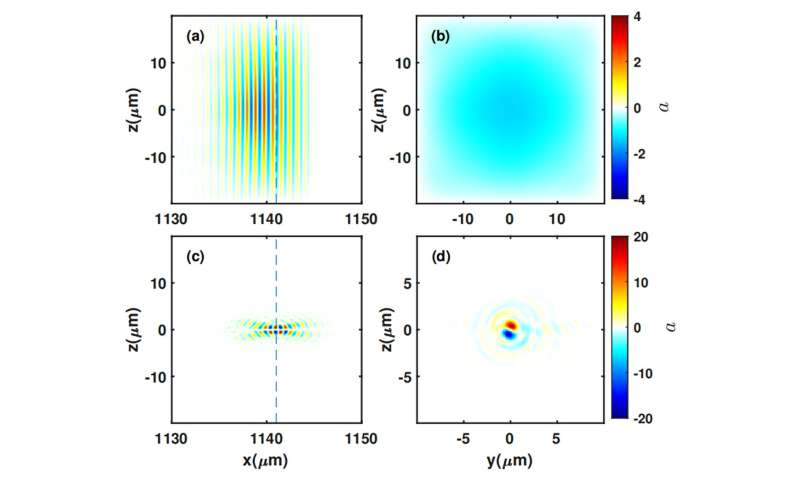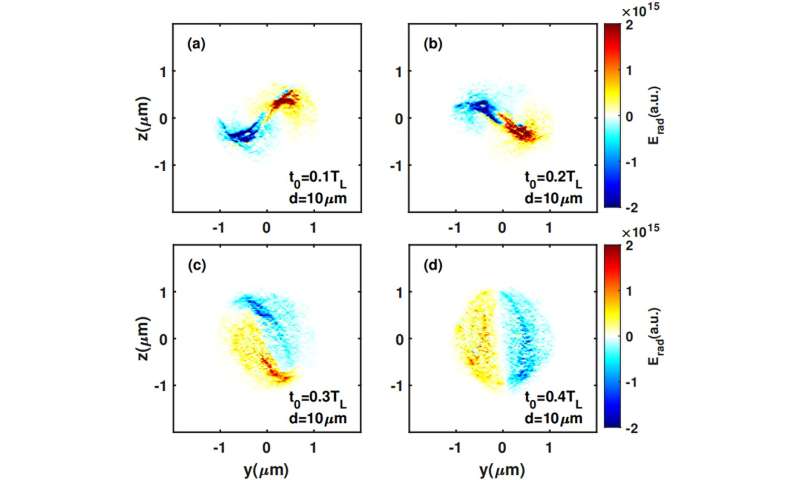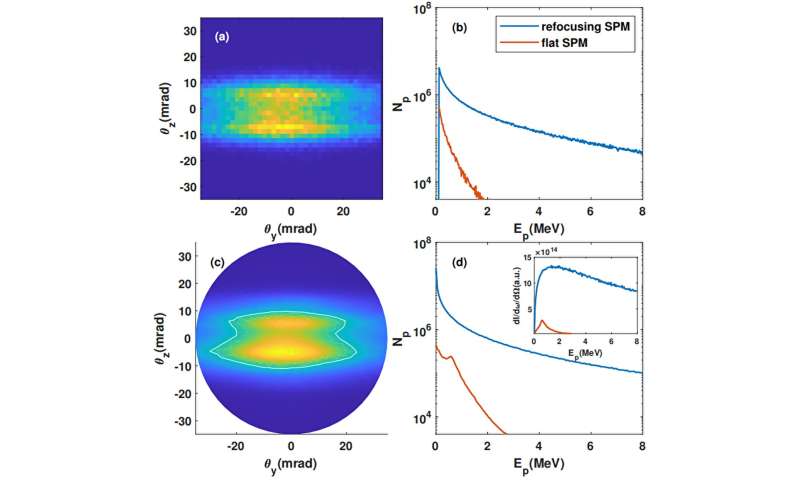Exploring a gamma radiation vortex burst in nonlinear Thomson scattering with a refocusing spiral plasma mirror

The high-energy radiation that carries orbit angular momentum has become an extremely important tool to investigate the angular momentum-related physics in the microworld. But the generation and characterization of the high energy radiation vortex remain urgent issues to be solved.
To address this issue, the group of Profs. Liming Chen and Wenchao Yan from the Key Laboratory for Laser Plasmas of Shanghai Jiao Tong University has developed a configuration using a special refocusing spiral plasma mirror to combine laser wakefield acceleration with nonlinear Thomson scattering.
Currently, there have been two achievable routes to generate a radiation vortex in a short wavelength range. One is based on the free electron laser, in which an additional helical undulator was added behind the pre-undulators to generate a vortex soft X-ray. Another more effective way is based on the Compton/Thomson scattering that occurs when a relativistic electron bunch collides with the vortex laser.
Compared with schemes based on the traditional electron accelerator, the radiation while using the laser wakefield accelerated electron beam shows advantages of a much higher time resolution and peak brightness. The common dual laser scattering scheme also needs an additional vortex laser, which must address the drift of space-time synchronization between the electron beam and the scattering laser.

To overcome these difficulties, the research groups of Chen and Yan put forward their configuration, which postulates that when the Gaussian laser driving the laser wakefield acceleration impinges on a refocusing spiral plasma mirror, the reflected laser would be compulsively multiplied with the spiral phase and would enter Laguerre-Gaussian mode.
In the meantime, the paraboloid surface would refocus the Laguerre-Gaussian laser on a small spot with an extremely strong field strength. The gamma radiation vortex would burst when the accelerated electron beam collided with the refocusing Laguerre-Gaussian laser.
The reflected laser was refocused right at the focal plane of the paraboloid. The normalized amplitude of refocused laser has increased to , which makes the subsequent scattering process enter the nonlinear regime.

By the assumption of neglecting the thickness of the sample electron slice, the radiation distribution on a fixed observation plane are as shown in the work. The radiation distribution present the identical topology structure with the scattering laser, but there emerges the unusual phenomenon of radiation distortion due to the radiation deflection by the intense laser field. But this distortion phenomenon does not break the angular momentum conservation of the radiation vortex.
The transverse radiation divergence angles are within and in the direction of laser polarization and its perpendicular, respectively. The spectra comparison between the flat and refocusing spiral plasma mirrors indicated the significant enhancement on gamma photon yield by the refocusing effect. The peak radiation brightness was estimated to be.
The paraboloid plasma mirror has the natural alignment advantage on space-time synchronization between the scattering laser and electron bunch, which guarantees the collision precision.

This scheme will significantly simplify the experiment setup for the generation of radiation vortex, and the refocusing structure could effectively increase the yield of high energy photons, which is achievable with current nano fabrication technology. The generated ultrafast bright gamma radiation vortex would pave the way for fundamental researches on the nuclear physics, quantum electrodynamics and ultra-resolution image.
The research is published in the journal Ultrafast Science.
More information:
Weijun Zhou et al, Gamma-ray Vortex Burst in Nonlinear Thomson Scattering with Refocusing Spiral Plasma Mirror, Ultrafast Science (2023). DOI: 10.34133/ultrafastscience.0005
Provided by Ultrafast Science